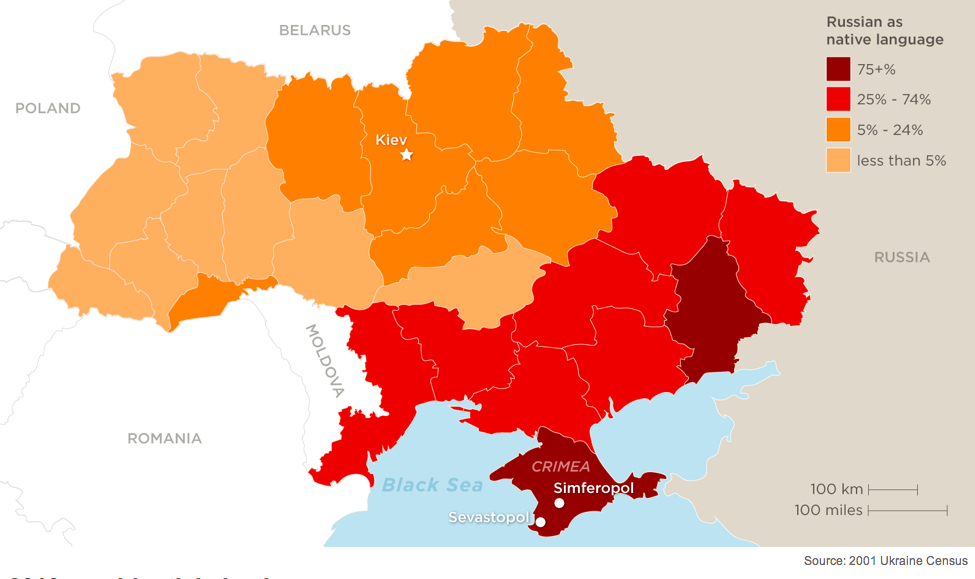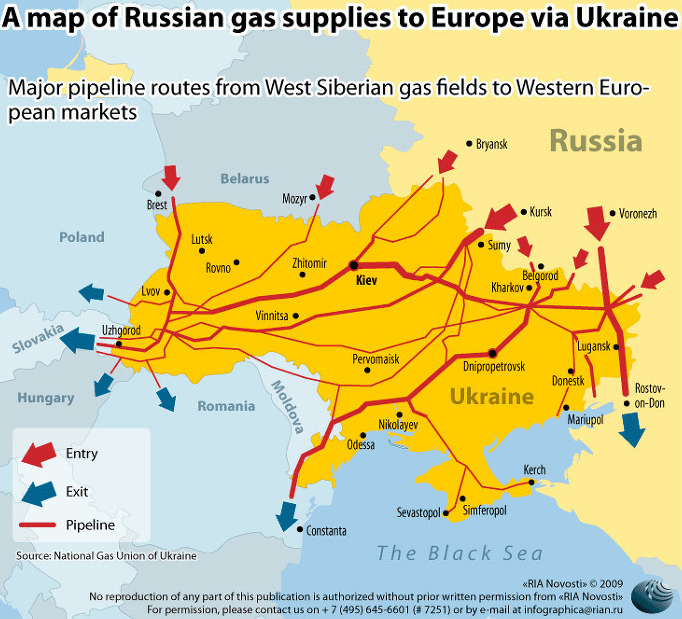Before a barrage of bombs began to fall on Ukrainian cities from Kyiv to Kharkiv, newspapers of record predicted that “Days of whiplash developments made unmistakable the volatility of a crisis that American officials fear could lead to an assault by one of the world’s most powerful militaries against Ukraine, Europe’s second-biggest country,” as artillery exchanges grew in the Eastern provinces. Fears of Russia staging a unilateral invasion of the nation grew as “a development that Europeans never thought they would see,” alerted the New York Times, challenging if not undermining Europe’s–and NATO’s–expansion of geo-strategic alliances in recent years. But the nominal accusations of an expansion of NATO has blurred, to be sure, with the accusations of the persecution of ethnically Russian populations in eastern Ukraine in the current charges of waging a war of “de-Nazification.” They nationalistic cry rallied faith in a Russian homeland that seem to be a reaction to the processes of globalization against which Putin’s right wing allies–from LePen to Donald Trump–have recently railed against.
If rooted in fears of preserving a lost Russian empire, an ethno-state eroded by the breaking away of Soviets, the recasting of Donetsk and Luhansk as “People’s Republics” in eastern Ukraine hearkens back to the soviet history in which Putin and Co. were molded, a reaction to by military formations in the ear of the Trump Presidency, as pincers around eastern Ukraine, long before the current invasion of Ukraine began–a show of force of tanks, artillery, and rocket systems poised to illustrate the porous nature of any nominal borders when it came to the old Soviet Union. For as if in refusal to let the post-1989 territory emerge as a liberal state–or a separate state–the resurgent ethno-nationalism of “preserving” or “protecting” Russian speakers from allegations of Genocide offered an Orwellian Newspeak by a totalitarian state George Orwell saw as critical tools to rationalize ongoing war, death, and cast as “subversive” the very concept of free will.
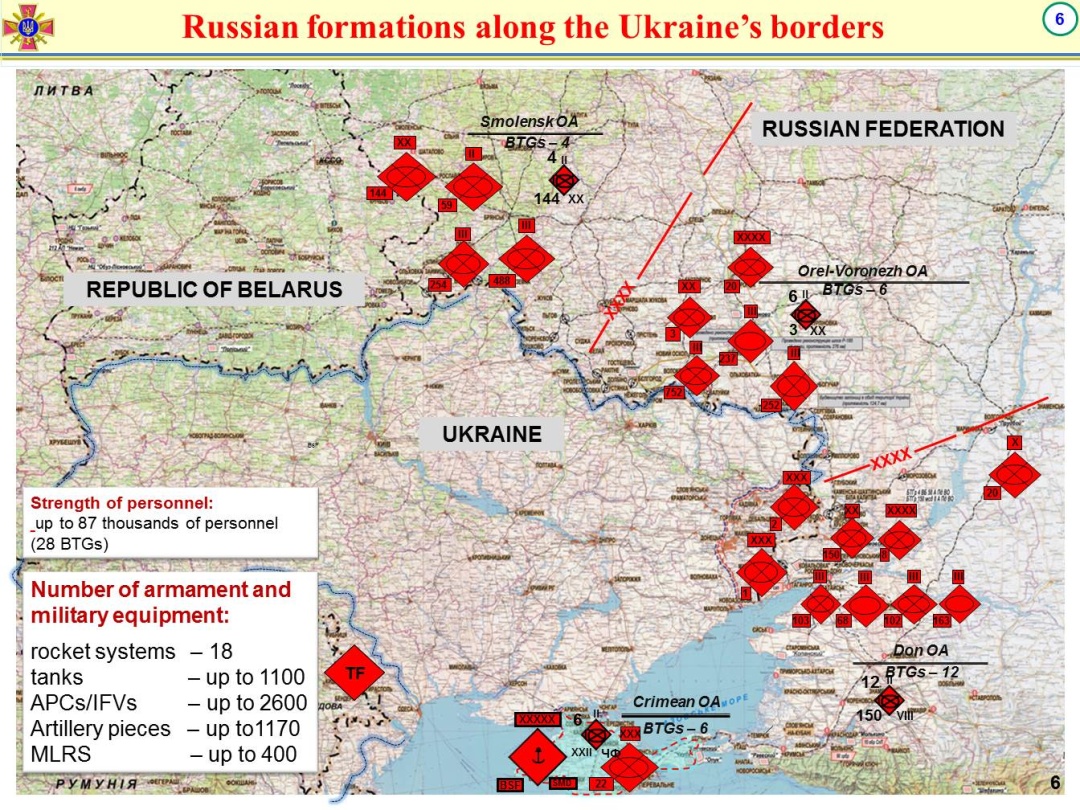
The dramatic massing of Russian soldiers on Ukraine’s border in the Spring of 2022 seems to have been engineered to question that border’s status as a guarantee of sovereignty. As if to mirror but were unlike the erosion of borders in globalism, however, the massing of troops was a display of Great Powers doctrine on the part of Moscow, echoing the emphasis on the expanded range of supersonic bombs that Vladimir Putin had foregrounded in his announcement of the range of nuclear bombs in 2018 when he announced to the world a new arsenal of “invincible” nuclear weapons before a video graphic that imagined warheads hitting the United States. The trumpeting of the apparent invincibility of Russian armaments that Putin suggested in a dramatic tableaux of Russian military dominance–

The bombast was reprised in reduced form at a local level as Russian troops massed an unprecedented show of force on Ukraine’s border in the postwar period. Their congregation seemed to firm up Russian power after Putin had dismayingly, misleadingly and perhaps self-servingly asserted was an existential threat to Russia more than an expansion of a defensive alliance. And if Putin later, after the invasion began, argued with duplicity “What is happening in Ukraine is a tragedy–they just didn’t leave us a choice. There was no choice“–the invasion that sought to reunify the old soviet that had become a breeding ground for liberal reforms was not really about the expansion of NATO, but the consecration of the boundaries of the old USSR, and the absence of “true boundaries” for Russia in the old Soviet bloc.

The border was already being denied in the massive show of force that massed in the Republic of Belarus, that old Soviet, in the larges mobilization of troops in postwar Europe. As 90,000 troop joined an assembly of 100,000, equipped with tanks, anti-aircraft guns, fighter jets, and armor on the area where the borders of Russia, Belarus, and Ukraine, the show of force seemed to erase any sovereign border or notion of independent sovereignty. The apparent focus of Ukraine’s forces in the west, was oddly paired with the positioning of Russian troops in the vey same positions they used to confront potential defensive strikes against NATO, as if the missile launchers and military planes by Ukraine’s borders were posed to move against a nation that had been hoping to join NATO, if with some American encouragement, and the readiness to gloss that idea as a tactical aggression that merited an immediate military strike. The fears of a move outside of Russian military and geopolitical influence fed a specter of mobilizing these troops again. This map, from almost a decade ago, suggests the long-standing tenuousness of these borders, and the readiness Moscow had long felt to remove their pretense.

March 1, 2014
The robust show of force that established its theater of influence and refused to be hemmed in by borders of sovereignty. Whether they reflected Vladimir Putin’s beliefs, or, far more likely, offered an excuse for military mobilization of such unprecedented scale against a country with few natural or geostrategic defenses, global media disinformation were filled, at the same time, with the fake news, amplified on Russian news and RT, calling NATO and Ukraine as threats to Russian sovereignty, even as Ukraine’s sovereignty was effectively bracketed and taken off the table, a pretext for Russian escalation whose size recalls imperial wars of the nineteenth century. The refusal of Viktor Orbán of Hungary to let military aid flow to Ukraine through Hungary, a reflection of his nation’s considerable dependence on Russian natural gas, and Budapest’s invitation of for the Moscow-based International Investment Bank, or IIB, whose founding ten member states of 1970 reflected the political geography of the Cold War–was relocated to Budapest in 2019, was long a conduit for Russian intelligence, and is led by the son of a KGB official formerly stationed in Budapest. As Central European states from the Czech Republic to Romania accelerated their exits from in response to the invasion of Ukraine, Orbán threatened Russia’s aggression would overflow far beyond Ukraine and charged opponents had designs to “drag Hungary into this war” and “make Hungary a military target” to his political advantage in a recent electoral campaign.
The vivid reassertion of a Cold War political geography haunts Central Europe today. Aggressive military moves one-upped the seizure of the Crimean peninsula and eastern Ukraine, but the massing of military presence outside Ukraine’s borders ramped up the abilities for invasions that would create a potential impromptu blitzkrieg that would leave, Russia hoped, a stunning memory of Ukraine’s limited sovereignty. Indeed, the clarity with which Volodymyr Zelensky has urgently asked the world to recognize Russia’s hopes to “break our nationhood” is evident in the way Putin’s ally, Belarusian President Lukashenko, addressed the Parliament as a schoolteacher, informing them of the splitting of Ukraine into four theaters of operational command, and several arrows that showed the planned movement of troops into Ukraine,–
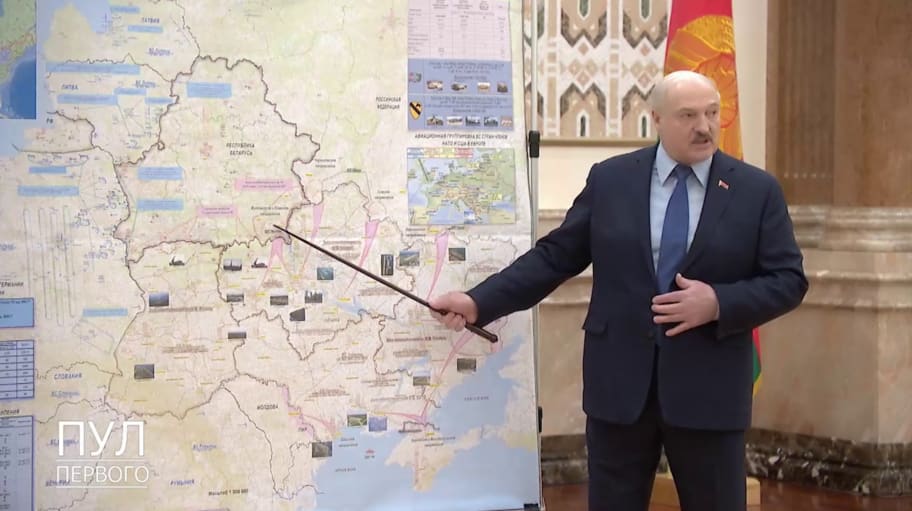
as if the nation that borders Belarus were not really secure, and the plans to use Belarus as a platform for staging an invasion was indeed already underway. The map used as a basis to lecture Parialiament displayed on state television was a “misunderstanding,” authorities claimed, but the pink arrows that staked out the routes by which Russian troops would invade Ukraine already affirmed the absence of Ukraine’s defensible borders; the pointer he used as a school-teacher to describe the impending display of Russian power as if to replace the actual Belarus President-elect, since 2020, Sviatlana Tsikhanouskaya, the former English teacher in Minsk who replaced her husband, Serghey, leader of an opposition Lukashenko had jailed. While Tsikahanouskaya has long left Vilnius, but resists the Russian-based orthography “Svetlana Tikhanovskaya” and Lukhashenko and his security forces relied on Putin for power, Tsikahnouskaya is a government-in-exile who long pinned her hopes to Joe Biden’s victory.
The threat of a cross-border movement of military troops were part of a theater of power and destabilization that had been central to Russian hopes to consolidate an old bloc. Beyond its hopes to affirm its presence in Crimea and around eastern Ukraine, now used as launching pads for an invasion in the above map, beyond countering an expansion of NATO, the hope was to drive fear into the old bloc and gain support from nominally democratically elected allies, from Viktor Orban in Hungary . Russian air force had flown nuclear bombers with missiles of expanded range over Poland’s borders, in November 2021, and in the airspace of Belarus, contesting the ability of NATO forces to move to the east and protecting what it saw as its crucial sovereignty over energy transport to central European states from Hungary to Poland, once part of the old “Soviet bloc.”
As Orbán posed with Hungarian generals and tarred his opposition with trying to drag the nation into war with Russia, Russian television news by March, 2022 remapped a nation in Cyrillic whose eastern half seemed to have collapsed, after Russia taken control of the airspace, with cruise missile strikes on airfields, fuel depots and infrastructure, even if the capitol had not fallen–hoping Ukraine’s inhabitants might decide to accept Russian suzerainty rather than continue war. Perhaps the capture of “territory” in the Russian imaginary that extends through the Dnieper River would provide the symbolic imaginary that Putin seeks to hold, although the ability to “hold” the lands that Russian forces have terrorized and flattened will be steep, even in the steppe lands of Ukraine’s Trans-Dniepr where about a dozen brigades–some 60,000 men–of Ukraine’s best troops are located. The image of Russian control of the Trans-Dnieper symbolically “restored” to Russian suzerainty ethnic Russians, promoting the illiberal logic of an ethno-state reducing Ukraine to a rump and cast Kiev as a border town, wiping Ukraine’s old border off the map.
The result would be to reduce the sovereignty of any Ukrainian “state” to a permeable polygon.

The initial mobilization of increased materiel that the Russian government had invested from hypersonic missiles to potential nuclear torpedos, eager to be installed in the Black sea and stationed in increased proximity to much of Europe, whose energy independence was already steeply compromised by their acquisition of and dependence on Russian oil and gas.
Ukraine became a “red line” to which Russia wanted to gesture, and indeed prominently fix on the map, as visibly as the US-Mexico Border Wall, as the Kremlin repeatedly warned the “red lines” on its maps could not be ignored by any “broadening NATO of infrastructure on Ukrainian territory”–as if the defensive alliance were intended to provide a challenge to Russian sovereign authority.
To be sure, the challenge of Ukraine’s hopes for its own sovereignty were already unprecedentedly threatened by massing from 2020 of military to the east within Russia–

Ukrinform, July, 2020
–far, far beyond the occupation forces that were already located in occupied eastern regions of Ukraine, and which completed a possible pincer operation simultaneously invading Ukraine from multiple borders and sides, as it tacitly pointed fingers at Washington, D.C. for encouraging Ukraine as an upstart by a growing escalation of force.

If Moscow shifted troops to Ukraine’s border to prevent Ukraine from becoming European, or, more accurately, to prevent its development as a democratic liberal state, the demonization of an imagined “expansion” of NATO eastward was imagined as an invasive virus, and a threat to an imagined Great Power status not of Russia, but the Soviet Union, and indeed Russian empire. Yet one can only understand the violence of the massive attacks that were to be unleashed against Ukraine as a last gasp of empire, an in a late imperial rationality of defending the imagined sovereignty across borders, boundaries, and ethnic identity, at a time when Ukraine was a part of the USSR, as much as a satellite states, and “satellite states” were not mapped by GPS satellites but rigid lines and shades of red, whose borders were more nominal than meaningful.
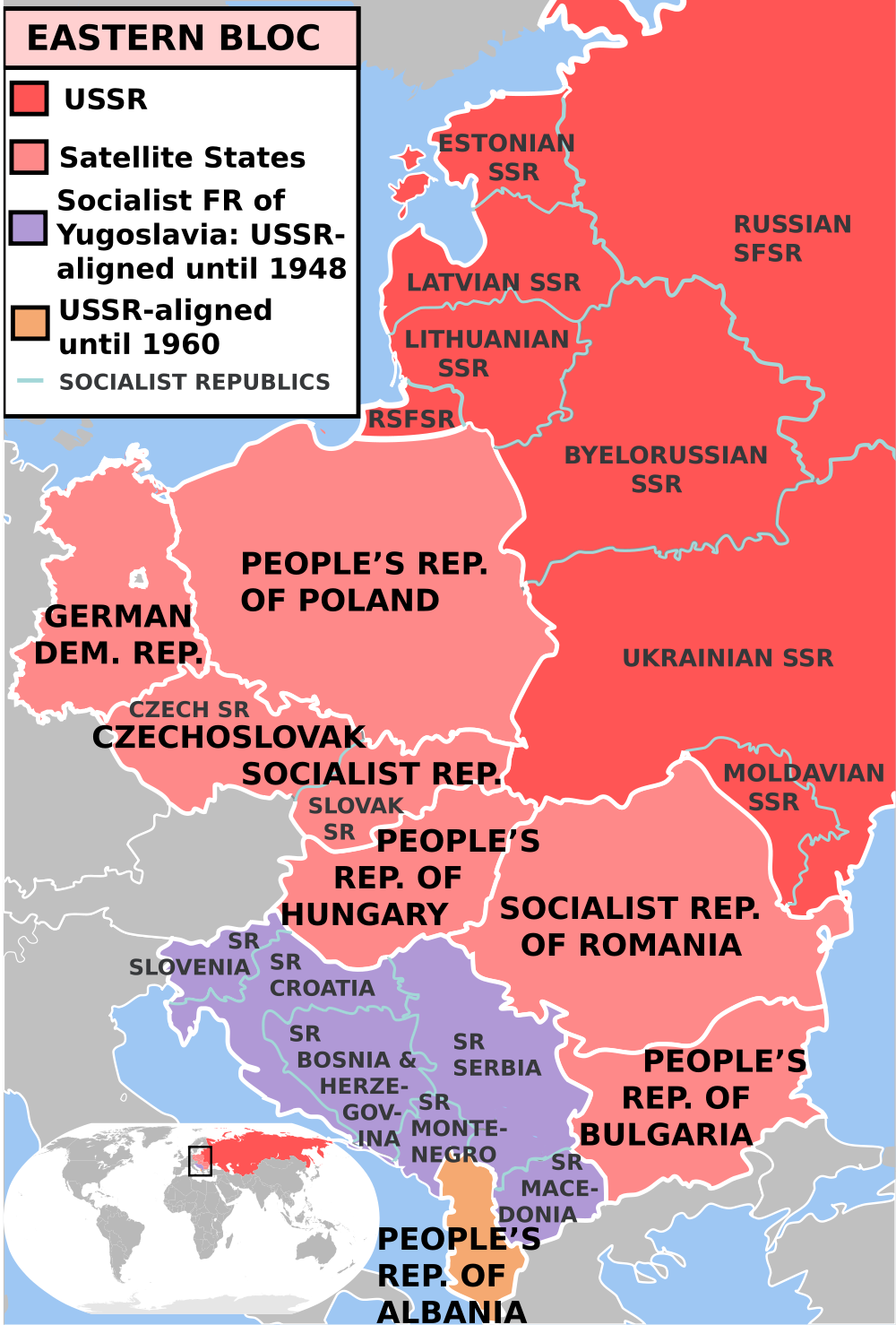
We risk presenting the struggle for Ukrainian independence in the narrative of great powers, however, overlooking the deep threats of the denial of Ukraine’s architecture as a nation-state. The great-power narrative unhelpfully Vladimir Putin as a chess grandmaster whose strategic planning were not thuggish and indecorous land-grabs of illegality. By annexing Crimea, provoking uprisings in the eastern Ukrainian provinces of Donbas–Donetsk and Luzhansk, or carving out a “confederation” made of breakaway “republics” of the evocative name Novorossiya, Putin had made Ukraine less a state than a mythic geography, conjuring it as part of a Greater Russia of Romantic cast. If WInston Churchill suggested with despair that Russia so opaque to be was a riddle, wrapped in mystery, wrapped in an enigma, a belittling metaphor of evoking the Beriozka doll, the alleged anger at Ukraine joining NATO mapped by an imperial imaginary of Russia tied to Ukraine, and to the seat of the historical Kievan Rus’, long sacred to the Orthodox church, wrapped in the historical Warsaw Pact, wrapped in the hopes for a future petrostate, but haunted by the fear of any recognition for a neighboring liberal state and its political autonomy
Putin seemed to have abandoned Novorossiya as a stillborn project by 214, but continued to meet with cronies in Gazprom over maps. We cast Ukraine as a chessboard, not a nation, but the Russian hostility to the NATO membership of Ukraine openly ignores the fear of recognizing Ukraine as an independent state. Ukraine’s reduction to an ethnic battleground in a Cold War geopolitical landscape led the imagined “Union of People’s Republics” to force Ukraine back into a new rebirth of the old USSR where Vladimir Putin was a lieutenant colonel, the “New Russia” foreign to any maps returns Ukraine to a Russian “sphere of influence” more nostalgic than actual, but with its own secure lines of transporting natural gas into the old Eastern bloc, and deep ancestral ties to the old empire whose imaginary remains stubbornly slow to fade. While Russian negotiators told Americans that they didn’t plan to invade Ukraine at all–“There is no reason to fear some sort of escalatory scenario” rebuffed Sergei Ryabkov, Russia’s Deputy Foreign Minister in early January–demands not to allow Ukraine into NATO were an apparent denial of its sovereign status, long before bombs rained indiscriminately on civilians, including hospitals where doctors were forced to heal wounded Russian soldiers at gun point.
And despite
Despite notoriously low participation in the Crimea’s “referendum” on rejoining Russia–a vote estimated by Russian President’s Human Rights Council, per a leaked report, at a measly 30%–the annexation of the region was accepted, rather than risking open conflict, despite military presence of Russian soldiers in the Crimean peninsula. The deep danger for viewing Russian aims in Ukraine in a “Great Powers” lens grows almost a decade later, imagining the division of Ukraine into sectors that resonate with a Cold War paradigm, is that it ignores the largest fear of a liberal state on Russia’s borders.
Ukraine was compromised as a nation-state, long before its borders were threatened with troops. Divided not by a Civil War so much as by Russia militarily occupying Crimea and significant parts of its east where Russian language remained dominant. The Russian government had recently fast-tracked nearly 800,000 passports, as part of a policy of “passport proliferation” that seemed to have aimed to restore a reduced Warsaw Pact by issuing a slew of some five to ten million passports to the diaspora of Russians from Georgia’s South Ossetia, Moldava’s Transnistria, and Ukraine’s Crimea and Donbas–a sort of “buffer” of peoples that Russia decided it would decree to expand the boundaries of state security, and even military intervention–both to address a growing demographic crisis by 2019, and to cement an ethno-linguistic identity as a regional foreign policy for annexing Crimea and Donbas by 2014–
effectively exploiting the division between “Russian” and Ukrainian language to undermine the hopes of a nation-state. While the intense violence since directed to Ukraine may have no logic, its undermining of Ukraine’s borders is an undermining of a project of sovereign status in favor of the idea of a “Russky Mir,” or a “Russian World” that reassembled a mythic Russian collective that denies the existence of Ukraine as a nation unable to be wracked by civil war.
As the government of Russia has responded to the threat of the expansion of NATO by a policy of increasingly ‘passporting’ former subjects of formerly Soviet territories, time past was folded into time present and the future, and time future projected as present in time past, and all of time eternally present in the invasion of Ukraine, in a historical pastiche of postmodern proportions. T.S. Eliot references aside, the burning of Kyiv and many wonder if Russia’s end was not lying in its historical beginnings, as the fixation on the political identity of Ukraine suggests Putin’s plans to affirm his historical legacy as reversing the dissolution of the Soviet spheres of influence by recuperation of the mythic imaginary of the historically Russian areas of the Kievan Rus’ beyond the early restructuring of Crimea. And if Putin had already commissioned a new global atlas of the world that will adjust the possibly problematic names of cities from Ukrainian to Russian toponymy, so that the resulting product will better rerlect “historical and geographic truth” by ensuring, as he quite aspirationally told the Geographical Society of Russia, and “preserve Russia’s contribution to the study of the sciences and the planet, lest they vanish from the map from the South Pole to Crimea, pushing back on how some nine hundred Ukrainian cities and towns shed previously imposed commemorative place-names since 1990, once honoring Marx, Engles, Lenin, or the leader of Russian Secret Police, Felix Dzerzhinsky, under auspices of Ukraine’s Institute for National Memory, a Gorbachev-era forum dedicated to “decommunization” and reckoning with the Soviet past: 946 towns and cities were slotted for renaming by 2016.
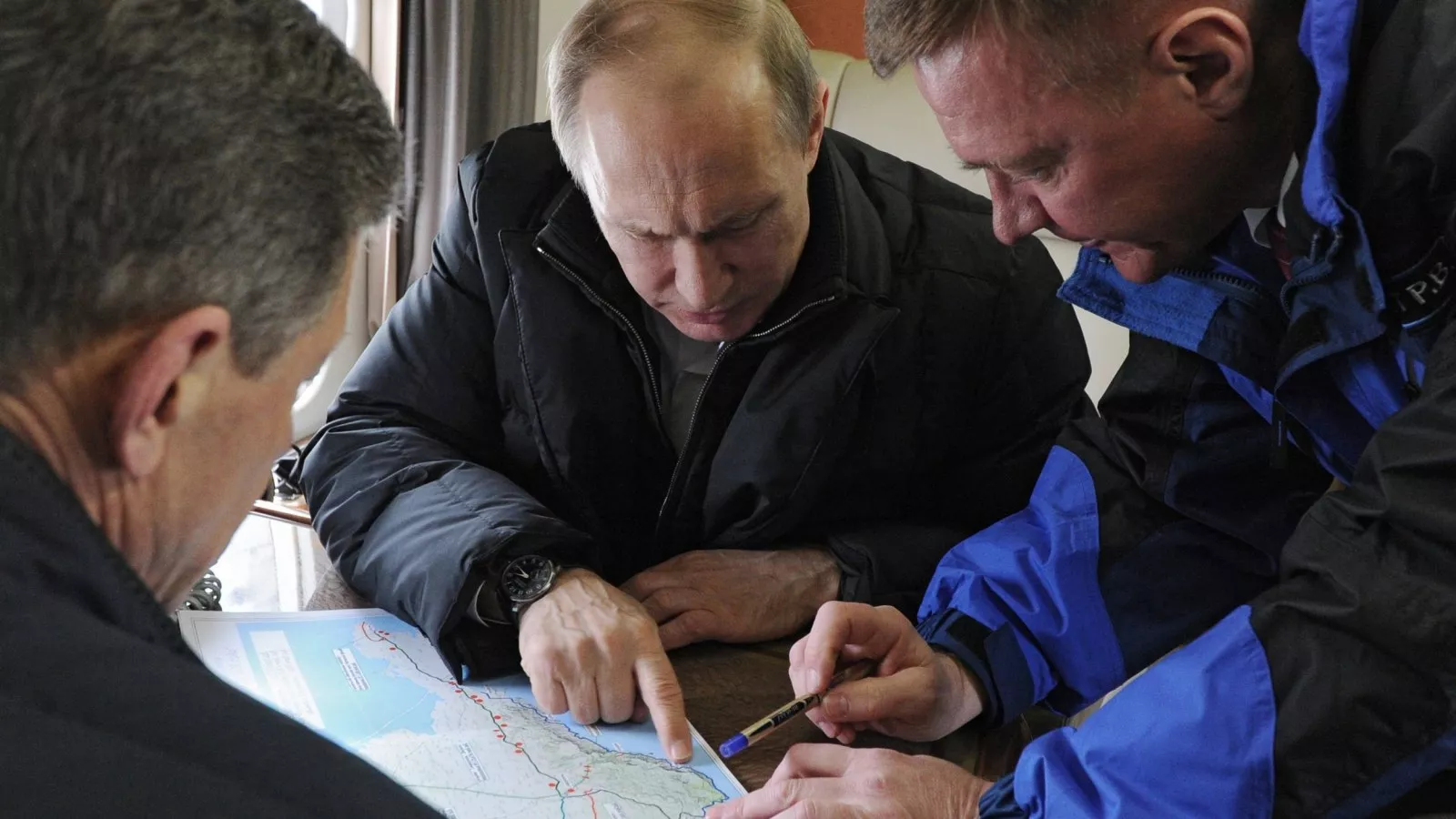
Yet if such linguistic maps are argued to be an explanation of civil strife or sovereign combustability of Ukraine, in ways that justify the intervention of Russia in Ukrainian territory on ethnic grounds, the ethno-national logic of Putin’s justification of meddling in Ukraine’s bounds and sovereignty rests on the deep commitment to “moral values rooted in Christianity and other world religions” that Putin has argued the “Euro-Atlantic states have taken the way which they deny or reject,” linking the Russian Orthodox church to Russian government and moral values, extolling the icon in early modern ways. Even as the Ukrainian Orthodox Church metropolitan Epiphanius I has likened Putin to the Anti-Christ or that the “spirit of the Anti-Christ operates in the leader of Russia,” the invocation of orthodoxy as a basis to justify Russian expansion plays on ethno-nationalist grounds akin to the proliferation of passports to discredit the West in Eastern Europe in ways that have only grown since the possibility of NATO’s expansion eastward: if only in 2018 did the Ukrainian Orthodox Church split from the Patriarchate of Moscow, to which it had remained subservient since 1686, the religious split reveals deep tensions in redrawing the map.
While the European Union had offered the possibility of membership to Ukraine and Georgia back in what seems the other world of 2008, dangling the prospect of “Euro-Atlantic aspirations for membership in NATO” of both states as an opportunity that was on the table. The promise presumed eastward expansion of a North Atlantic Treaty Organization beyond Poland and Hungary, to Baltic states of Estonia, Latvia, Lithuania, as well as Slovakia and Romania able to pick up the peaces of the disbanded Warsaw Pact. Russian reaction to Ukraine the affirmation “these countries will become members of NATO,” was perhaps far less a “whiplash” than the culmination of Putin’s immediate warning of “most serious consequences of European security” would provoked an unprecedented “direct threat” of almost existential terms, that would make Ukraine not a “border” of Russia–it gained its name as a “borderland” of the Kievan Rus’–but, in ways by which Putin seems to have become increasingly haunted, with its own identity as a nation-state.
The concerns of processing the presence of some twenty Russian or Russian-allied military forces around the nation’s border forced us to try to an intractable geographical impasse of Ukraine’s place in Europe, or, as Russia insists, the periphery of Russian sovereignty–if not the sovereignty of the borders of Ukraine. As Ukraine tried to shift its status as a borderland in Cold War maps of old, and the new security structure of a European Union, the world confronted the emergence of a New Cold War, haunted by the division of separate spheres of dominance.
1. The public perception of an “inflection point” of the eastward expansion of NATO resuscitated a Cold War geography: yet can the fixity of these old spheres of influence fully explain the massing of troops on Ukraine’s borders? To be sure, right-wing American commentariat, obsessed over the dangers of NATO expansion and eager to see American disentanglement from Europe, openly argued that NATO expansion was the precipitating reason for broad military invasion that would kill civilians and destroy hospitals, schools, monasteries, and villages. But the illegality of the invasion that only led Russian state news to recycle Tucker Carlson’s buoyant defense that the Russian invasion is “only protecting its interest and security,” was as popular among Russian government as his asking viewers “how would the United States behave if such a situation [of placing military bases] developed in neighboring Mexico and Canada?”, evoking a Cuban missile crisis playbook of the past. Carlson’s isolationist pro-Putin rhetoric imitates Russian government in subsuming “Ukraine” as a nation in the long memory of spheres of national influence, in which eastward expansion of NATO boded a redrawing of a global map–and ignored the range of missiles, radar systems, and missile interceptors that have already been deployed in the European theater by an expanded NATO since 2019–all exclusively purchased from American contractors and weapons systems manufacturers, long imagined as a “missile shield” over Europe.


The demand for “security guarantees” Russia had demanded from Western powers as NATO and the United States since before December has lead, however, to the placement of the Ukraine conflict in a Great Power narrative, as if this were at all informative. Yet the expansion of military defense systems across Central Europe belies the continued finger-wagging of right-wing political scientists like John Mearsheimer long wagged their fingers at NATO expansion in the face of a great power geography.
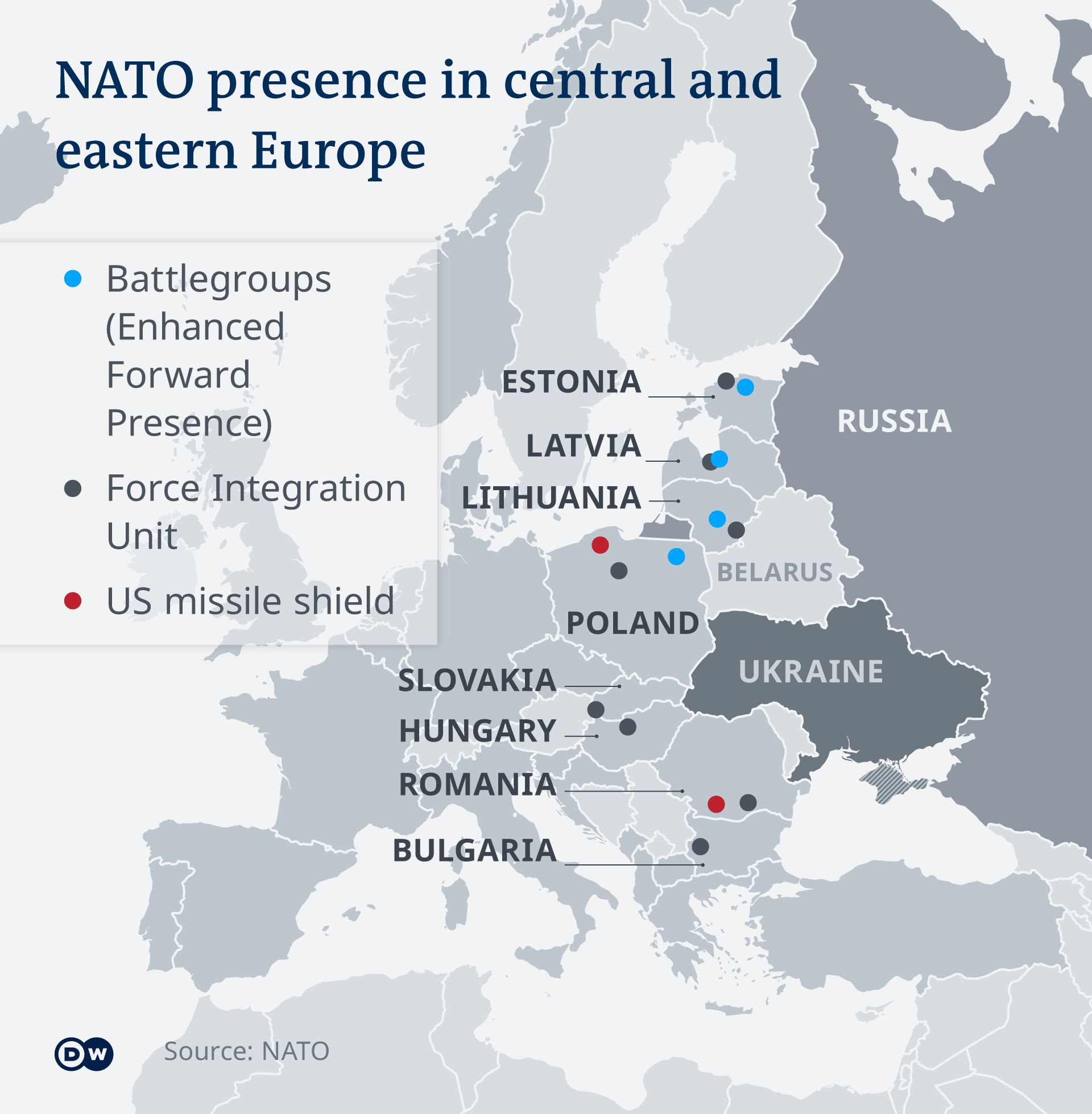
The Times found Russia’s unprecedented massing of troops along the northern border of Ukraine risked “Reigniting the Cold War Despite its Risks” (January 20, 2022), describing a global power struggle as as if Ukraine’s independent sovereignty was not a crucial puzzle piece in the dilemma. The headline trumpets fears of a new Cold War in Europe, over thirty years after the original Cold War had ceased as the primary lens for geopolitical security, triggered fears of a familiar tinderbox on the borders of Russia, as its leader invoked a narrative of border security and national vulnerability to invade a separate sovereign country. Indeed, the possible rejoining of a Intermediate-Range Nuclear Forces Treaty, which the United States abandoned in 2019, accusing Russia of long violating the terms of a treaty signed thirty years ago, in the Cold War world. If these missiles were long seen as a basis for European security, Intermediate-Range Nuclear Forces, missile deployment is a smokescreen for deep fears of an open democracy.
Even if Ukraine, once in the Warsaw Pact, shares a border of over 2,000 km–about the span of the United States’ frontier with Canada on the 49th parallel from Washington to Minnesota, or, alternatively from New York to Chicago. But the border was less the point, or even its length, than the pipelines that allow the petroleum state to reach other members of the old Warsaw Pact, leaving them dependent on Russia for gas.
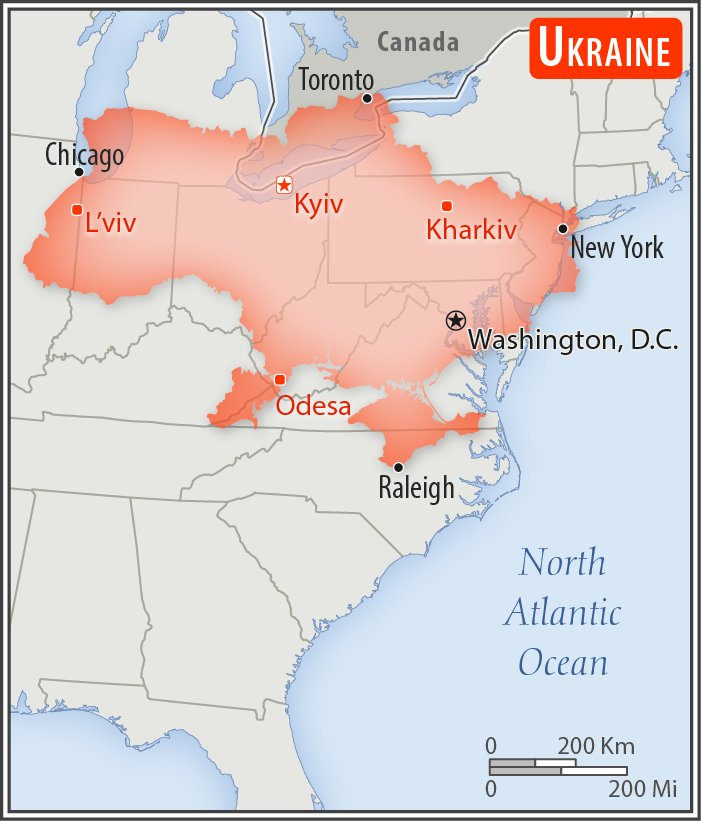
As much as the expansion of NATO, however, the possible of claiming Ukrainian sovereignty of its borders was denied by the troops clustered along Ukraine’s borders who menace crossing into its territory on world view. The massive stationing of Russian and pro-Russian troops on the border seemed something of a performance piece, and something of a threat to end Ukrainian’s European aspirations.
Global conflicts along borders have long been dominating the national news, but all of sudden the edges of borders are up for debate as a debate that contrasts national identity to spheres of influence inherited from the Cold War. The presence of some 190,000 assorted troops of the Russian Federation on or near to Ukraine’s borders is a power play, committed to wrench the region from NATO, if by asserting, as Vladimir Putin has claimed, Ukraine is not in fact a state. Fears of the destabilization of a Cold War geography seem to lie far more deeply rooted in the calculus of Vladimir Putin, who had entered politics after over a decade as a Cold War spook, two years before the declaration.
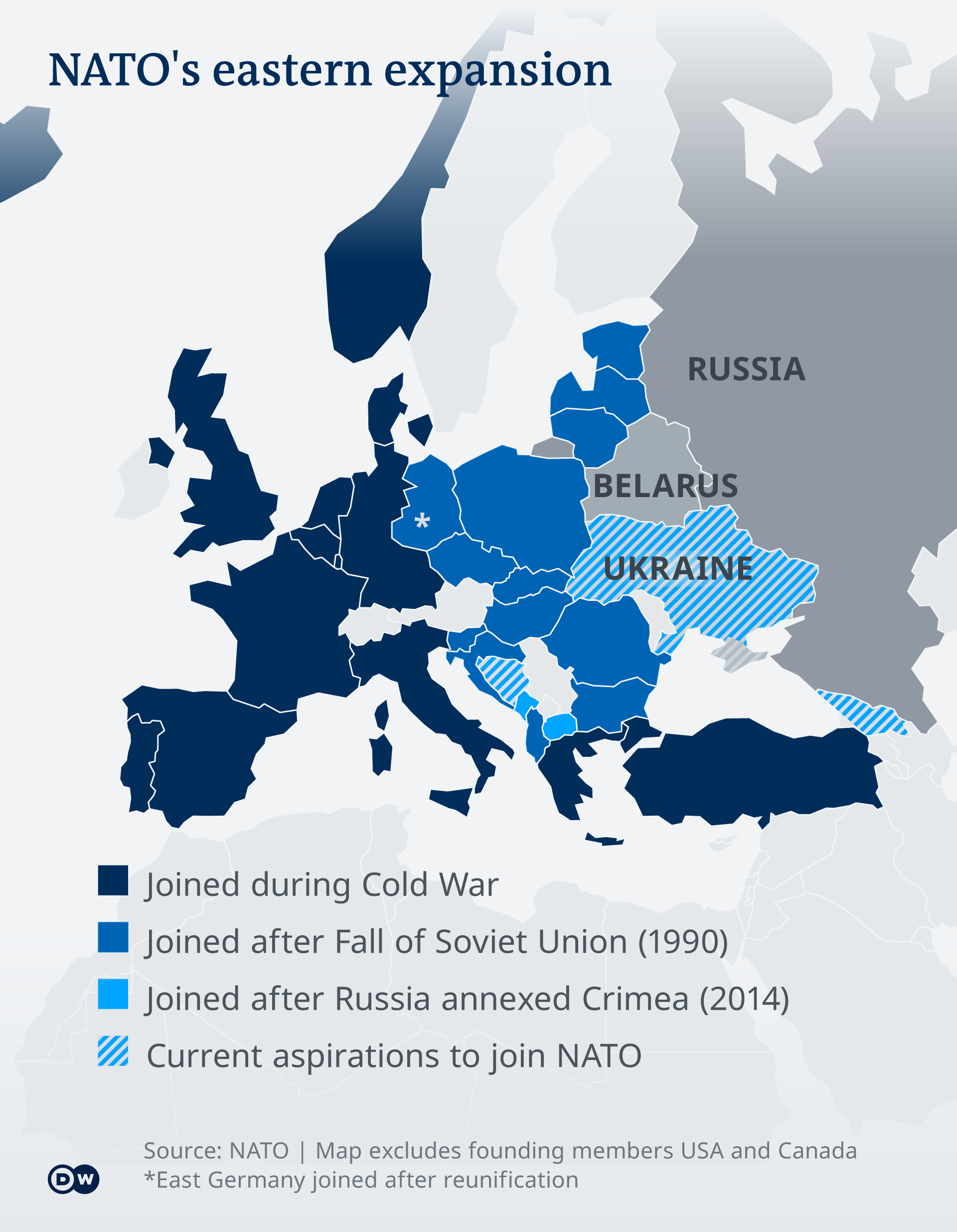
The characterization of Putin the intellectual image of the “chess player” looking at long-term national strategy seemed less in evidence than attachment to the borders of the Cold War bent against the formation of a liberal state. Putin’s preposterous claim that Ukraine was only born as a state as a geostrategic part of the USSR is not only preposterous, but deeply haunted, one might speculate, by a lost geography of the Kievan Rus’, and a sense of preserving the former Soviet Union from the autonomy that its individual states, or soviets, were allowed–and indeed the danger of according such privileges to regions as Georgia and Ukraine, each of which had been offered a partial promise back in 2008 by NATO that they might join the security organization, after Putin had already refused to allow Ukraine to gain such a degree of independence or sovereignty as a state.
The survival of that promise by December 2021 was deeply troubling to Putin as he began to open dialogue with Joe Biden about the military architecture of Europe, and feared the increased unity of Europe and NATO as an alliance. As NATO secretary stressed these plans had not changed, Putin dismissed the “right of every nation to chose its path [and] . . . what kind of security arrangements it wants to be part of” by denying the rights of Ukraine as a nation. And as he claimed Ukraine to be a creation of the USSR, as if it were its property, “entirely created by Russia,” he denied any sovereignty as a state, as if a new Cold War might begin by reassembling the Russian diaspora from an earlier, mythic imaginary, not rooted in a map of nation-states, alliances among states, or national security but indulging a deeper ethnic identity.
Perhaps, in this sense, any paradigm of earlier treaties are not the point, from the Cold War to the Warsaw Pact, even if Putin saw the prospect of NATO membership as an aggressive act that ignored his ultimatum. There may be much in Fiona Hill’s fearsome observation that the maps that Putin is reasoning from are not at all from the Cold War–“I also worry about it in all seriousness,” she confessed, that in the pandemic, as we pondered global biorisks, “Putin’s been down in the archives of the Kremlin during Covid looking through old maps and treaties and all the different borders that Russia has had over the centuries,” obsessing with how the borders of Russia and Europe have changed and how Russia might be reconstituted in Europe, and magnifying the consequences of Russians in Ukraine joining NATO. More than believing Putin intends to wipe Ukraine from the map, it was as a state that “it doesn’t belong on his map of the ‘Russian world'” and its borders or the borders of Europe were provisory on all maps: if NATO seems to think that it can dignify the state’s place in a security structure, Hill sees Putin as denying its sovereignty to affirm the notion of “Novorossiya”–a ‘new Russia’–that in 2014 he imagined as a republic from Odessa to Karkhiv, whose own borders interrupted Ukraine from a map; if the hypothetical confederacy was abandoned by the republics of Luhansk and Donetsk, following high level meetings of the United States and Russia, it had gained an independent flag and conceptual momentum bolstered by the decision of Russia and Bielorussia to withdraw from the International Criminal Court as it considered the criminality of actions of annexing Crimea–as it recognized the “armed conflict between Russia and Crimea” as claiming nearly 10,000 lives since men in military uniforms siezed control of the Crimean parliament, appointed a new prime minister who was a shadowy businessman nicknamed “the Goblin,” as the police-men who have been placed puppet leaders in Donetsk and Luhansk, with less practiced in politics than policing.

And as the emergence of Donetsk and Luhansk agains as “break-away” republics conjure a map of Russian transnational sovereignty that trumps Ukraine’s sovereign independence is often cast by Moscow as engaged in a “Civil War,” the proposed partitioned gained little traction or public support–and indeed invited such opposition to be classified as terrorist organizations: the mythic republic condemned for undermining any sense of self-determination were again recognized as states by Moscow in February, 2022, precipitating the invasion of Ukraine.
2. This was not ignorant, or the culmination of a sustained disinformation campaign to reassert a Cold War, even if it seemed haunted by a fear of the history of losing former soviets. The fear of allowing them to develop on a liberal institutions, possible as seats for non-national news organizations that would border Russian lands, was not only able to raise fears of the future dismantling of a Russian state, but reminded one of the danger of sovereign independence outside of a Russian . Rather than trying to return to the dominance of trans-national spheres of influence, some thirty years after Ukraine voted for its autonomy as a sovereign state–
–the hope was not to restore the categoric divisions of the Cold War, long off the map, but to prevent what Moscow feared–a missile system able to target Russia, a possibility Putin argued whose “unacceptable threats to our security . . . provokes serious military risks for all” that might indeed provoke “a large-scale conflict in Europe.” The prospect of a Ukraine in NATO has provoked the invasion and possibility of the destruction of the country, in a burnt earth policy that seems similar to the Nazi goal of wiping Petersburg–as Leningrad was then called–from the map, in hopes to not have to be responsible for its residents. At the start of what was a two and a half year siege that after a month of encircling the city, Hitler issued the unprecedented directive, Directive No. 1601, itself a war crime, ordering “St. Petersburg must be erased from the face of the Earth” and “we have no interest in saving lives of civilian population”–and proclaim in a public speech that its citizens of the encircled city were to die of starvation.
Hitler was interested in affirming not a sphere of influence, but German supremacy. The destruction that Putin was about to launch on Ukraine was not guessed by many. As much as jump to the conflict by invading Ukraine’s borders, the bordering nature of Ukraine on the edge of Europe was preserved by the massing of troops beside its borders, threatening the move “closer towards a big confrontation” that Foreign Minister Sergei Ryabkov threatened the world in mid-December, 2021. The warning of military confrontation arrived the very day Joe Biden addressed a Summit for Democracy, sustaining that “Autocracies can never extinguish the ember of liberty that burns in the hearts of people around the world, in every portion of the world” and “knows no borders,” citing Seamus Heaney in prophesying arrival in the world of a longed-for “tidal wave of justice can rise up” in which “hope and history rhyme.” Were his words heard by Putin as a declaration of an intent to support Ukraine in the coming months, purposefully antagonistic?
As much as retreat to the separate spheres of a Cold War, for his part, Putin might have claimed to retreat into a symbolic unity of Russia. He wanted to assert the the purity and centrality of Ukraine in specific–and, as we have seen, with almost a keen fixation and focus, Kyiv–on a mythic imaginary of Russian integrity, when he asked NATO to break its promise on December 10, offering a place in its security architecture to Ukraine, that restored an old mythic geography of Russian borders, of an almost mythic historical integrity, abrogated the ostensible borders by which Ukraine had become ever known as a nation-state, perhaps returning to the hoary borders of the ancient historical Kievan Rus’ as if seeking a legitimacy that exists beyond the borders of the nation-state, both in the history of the USSR but, with imaginary roots in the Byzantine image of the Virgin of Vladimir icon, the Vladimirskaya, painted allegedly by Luke, the protectress of Russia, that left Constantinople in 1131 to be venerated in Vladimir’s catheral near Kyiv from 1155, if since 1395 venerated in Moscow as a protectress of Russia.
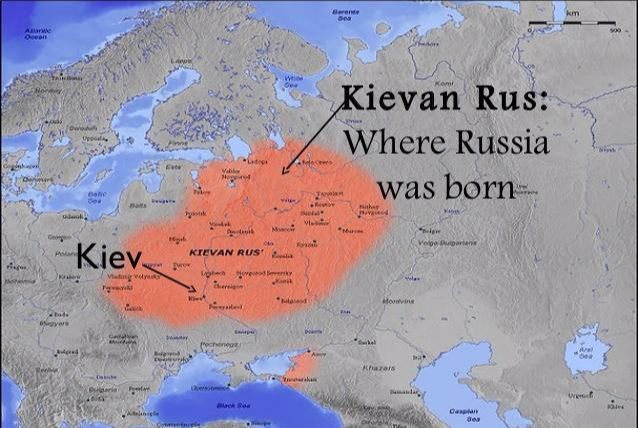
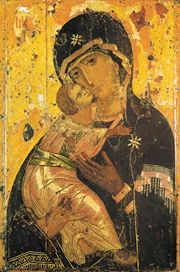
If we have seen the critical role of Ukraine both in this wordpress blog and elsewhere as a means to ensure the continued exportation of the underground Russian energy reserves on which the national economy depended, the aggression around Ukraine’s sovereign status hearkened back to the era when Kyiv and Odessa as military districts in the USSR, without autonomy: as Putin had taken pains to removed Crimea from Ukrainian territoriality that Nikita Khrushchev had proposed as a “gift”, allegedly to mark the celebration of the “reunification of Ukraine with Russia” three centuries since the “boundless trust and love that the people of Russia feel toward the Ukrainian people.”
The “gift” of Cirmea that Khruschev offered, was, according to Pravda‘s headline on Feb. 19, 2009, indeed given away without much of an afterthought: “USSR’s Nikita Khrushchev gave Russia’s Crimea away to Ukraine in only 15 minutes,” readers learned to their shock, rueing the give-away long before the annexation of the Crimea began, as an unsavory moment of the past. “‘Yes, comrades, there is an opinion to deliver Crimea to Ukraine,’ he said casually,” Pravda remembered, and, so compelling was his word, “No one dared to express any protests, because a word of the first face of the Communist Party was law.”

While the pragmatics of the “gift” remain open to public debate, and probably was to please Ukrainian elites, Khrushchev had earlier suggested the idea to Stalin when he served as leader of the Communist Party in Ukraine. The restoration of the oblast of Crime after sixty years openly reversed that love; paired with recognizing eastern Russian-speaking states of Donbas, it pealed away two “peoples’ republics” and reduced Ukraine’s autonomy on openly ethno-nationalist grounds–grounds that Khrushchev, a Georgian who had affinity with Ukraine where he had worked as a miner, found no reason to sustain. The centralized fiat revoking Khrushchev’s expansions and guarantees of Ukrainian independence was only underscored when Putin offered to cease hostilities in exchange for recognizing “Russian sovereignty over Crimea” beside the “demilitarization and denazification of the Ukrainian state and ensuring its neutral status.”
We were all invited to remember the geography lesson of the distance of the Cold War of an earlier era in a sign held by a protestor of the Russian invasion Putin has personally ordered. The invasion on land, air and sea into Ukraine’s borders came on the heals of a refusal to acknowledge or respect its borders or the existence of its borders; this was almost less about a world of global strategy and geostrategic alliances than the denial of national will or sovereignty. If the January 5 affirmation that “U.S. Draws a Line on Ukraine” reflected fears of a military response to the proposed expansion of NATO, the NATO question was almost a fig-leaf for staking new claims to land of a historical Russia.
3. But it seemed easier to see through the tired lenses of Cold War: by mid-month, the newspaper of record framed the problem as seeking to balance the inflexibility of Russian demands that the NATO alliance “drastically scale back its presence near Russia’s borders in Eastern Europe” (January 14, 2022). The commitment to a Cold War mindset not only motivated an intent of Moscow to “effectively restore Russia’s sphere of influence close to Soviet-era lines” as if it was living in a time warp; the expansion of Russia has left Ukraine in an unknown region, removed from the west, or from global ties, as a map if its airspace revealed, as the nation was suddenly isolated, tracking maps of global air freight companies reveal, avoiding Ukrainian airspace as its invasion approached.
To see the conflict through the lenses of the Cold War has been an undercurrent of American reporting, reflecting the dominance of the Cold War in Russian eyes, rather than the problems that Ukraine faces as it asserts its independence and its sovereignty.
But it seemed inescapable, even as the United States sought to draw a new military security architecture in Europe, as this was such a primal map haunted those who had hoped to see the nation-state as the as the basic unit for a future European alliance. The feared war of aggression reflected fraught mapping Ukraine in geopolitical strategy that has led to it long being feared or evoked as a potential site for global war: fears of a Russian expansion into Ukraine haunted the pages of Foreign Affairs back in 1993, when the specter of a “disaster” of a Russian-Ukraine during debates on fears of losing ICBM’s stationed in Ukraine and a fleet in the Black Sea as “reliable deterrent to Russian aggression.” And when, just a week ago, prior to the invasion of Ukraine by land, air and sea Putin threateningly warned of the danger of inviting a nuclear response, warning that “even after the dissolution of the USSR and losing a considerable part of its capabilities, today’s Russia remains one of the most powerful nuclear states,” he conjured an indelible image of Cold War missile exchanges. The words made many very glad indeed that the denuclearization of Ukraine had indeed been accomplished, if some hawks will argue that the invasion demands a return to containment as a global strategy of peace. Yet has Russia forgotten that in 1994, the transfer of the third-largest nuclear arms stockpile in Ukraine was exchanged for the an accord to respect its “independence and sovereignty” and existing borders? The haunting of the present by a Cold War geography of “great power politics” conducted by nuclear superiority seems to have recently reared its head in an ugly time warp.
The Cold War had inescapably entered the reporting on an escalating military border conflict in Ukraine–even more as he pronounced any state that should “directly attack our country,” presumably including Russian troops in Ukraine, “will face defeat and ominous consequences,” openly evoking the threat of an atomic war. The new Cold War global geographic imaginary was jarringly different from the global risks we had recently been worried about keeping at bay in the pandemic. But they were scarily familiar, and perhaps just as preoccupying. While Russian troops were technically concentrated in Russian lands, what were “Russian lands” were the point, and what relation Russian authorities would have to the pipelines coursing through Ukraine to the west, and whether Russia would be able to find the strength and honesty to recognize Ukraine’s dedication to being a separate state.
And if we have focussed on those ethnically Russian lands East of the Dnieper river, the terrifying military incursions of the idea of a “Greater Russia” appeared again in a deeply problematic historical imaginary sketched by Vladimir Putin, before glowing a map of Mother Russia, stating Ukraine was only a nation due to Soviet oversight. As Putin seemed to plan a massive land attack that would not necessarily regain all of Ukraine in Russian bounds, but domesticate this erstwhile NATO member for a Russian audience as confidence in his government ebbs. Military build-up on three fronts of Ukraine suggested as much.
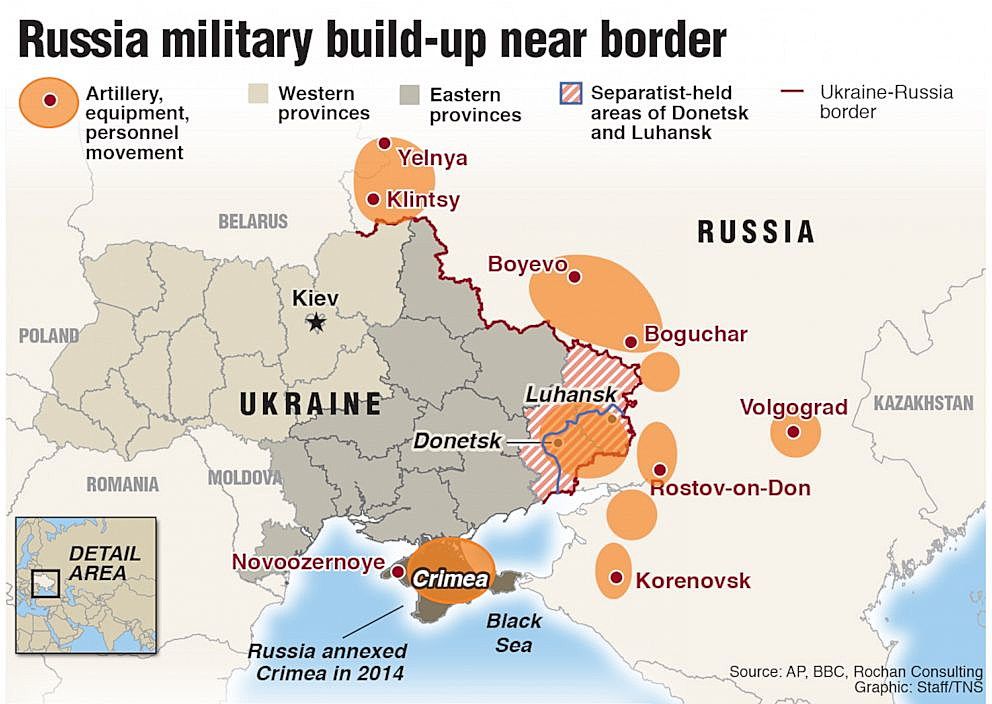
The unavoidable echo of a restoration of a departed Warsaw Pact casts its shadow over the present, but so do the dreams to restore a sense of Russian greatness that belonged not only to the USSR, but to Russian history, and to evoke an ethno-nationalist tradition of grandeur that, for all the comparisons of Putin to Hitler that have made the rounds on social media, fails to often be mentioned as underlying the promotion of restoring the centrality of the Russian state to a global stage. The headline proclaiming the dangers of Russia unilaterally and dangerously “Re-Igniting the Cold War” most powerfully conjured a Cold War imaginary of Soviet “satellite states” in a bifurcated Europe from the not recent past that now seems in danger of infecting news reporting.

For the image of such a massive land and air invasion openly hearkened back to casting “Eastern Europe” as a broad buffer zone of allied states. While rooted in the post-WWII era, it was mapped as if it haunted the present more than anyone had stated openly as NATO partnership was offered, for the first time, to a former member of the Confederate of Independent States, provoking a concerted attempt to challenge and fragment any sense of a European Security Infrastructure that might challenge Europe’s dependence on Russian oil and natural gas. Ukraine was, of course, part of the former Soviet Union in the twentieth century, but re-mapping it as a part of Europe suggested how little geopolitics have emerged from a postwar world.
This is fitting, as the echoes of history on the escalation of was not a border dispute, but a dispute of what is described by Russia’s Foreign Ministry and Putin himself as “no eastward expansion of NATO” suggests the problem of irreconcilable world views. While we are warned repeatedly of the possible pretexts for war in the “surrounding” of Ukraine by three sides, the stationing of a pro-American military bulwark against Russia’s borders is where the problem lies, there is no secret, from the Russian point of view. And the relatively recent staging of NATO war games on unprecedented scale in Poland on the largest scale since the Cold War in 2016, involving some thirty thousand troops, an event repeated if on smaller scale in Ukraine in 2022 of a thousand service men. The fears were indeed repeated in the range of simulated “war games” on game boards that elite US military regularly imagine in different scenarios on geostrategic board games,—

–including the staging in the U.S. military of coordinated “Global Lightning” military exercises that showcase integrated nuclear command in which scenarios of Russia invading the Baltic States that lead to nuclear confrontation. They may make one wonder if not only Putin but the U.S. Strategic Command had operations dating from Cold War years in mind.
4. The envisioning of the next conflict between great powers as lying in Ukraine had been a hot issue since the debates about keeping nuclear arms in Ukraine after it voted to separate from the Russian Confederation, and the presence of ICBM’s in the region was judged a needlessly provocative gesture. But the inclusion of Ukraine in NATO helped to rekindle may of the same earlier fears: if many Soviet ICBM’s were long stationed in Ukraine–and intense debates after the fate of ICBM’s in Ukraine raised their heads in the early 1990’s after the fall of the Soviet Union left the question if the ICBM’s would be redirected to Russian lands, a very real fear from the perspective of Vladimir V. Putin. (The retaking of Crimea afforded the possibility of deploying new defensive missiles trained on NATO countries.). The fear of an expanding NATO, on the brink of offering membership to Ukraine, would have realized the fears of missiles being turned on Russia.
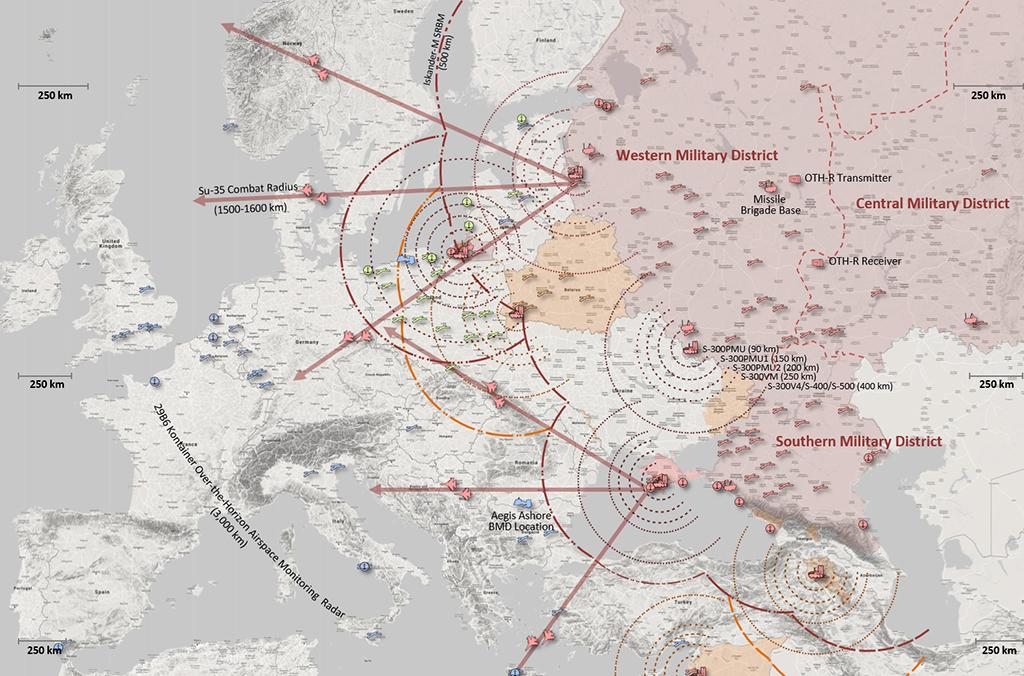
5. The problem evident in the reporting of Ukraine’s place in Europe is a modern conflict of the status of the nation-state. But it also uncannily echoes Franklin Roosevelt’s concerted establishment of a “wall of Pacific bases” that the Japanese saw as a “great wheel” that was perhaps based in Singapore, but arched to the Philippines and included US air bases in the Pacific reefs of Wake Island, Midway Island, and Guam that did encircle Japan’s sphere of influence, extending American influence across a Pacific theater Japan long saw as hers. Japanese retired generals raised serious concerns about the presence of what they felt, in 1935, was the broad stationing of American planes in “natural ‘aircraft carriers’ [offering] enemy squadrons ideal places from which to operate;” they were expressing concern and deep discomfort at the aerial war games staged that very year by 450 US Air Force pilots based in the reef islands–the largest in America had ever staged in any part of the globe–to make a pretty self-evident geopolitical point bordering on brinksmanship. While the map showing “the Pacific Ocean” with radial air flights from Hawai’i of Charles S Hammond was designed in response to Pearl Harbor, in 1942, the ostensibly neutral map “The Pacific Ocean” showed a theater of military dominance in reassuring terms to Americans, pushing “The Japanese Empire” to the side.

The sense of eastward aggression was reinforced, if anyone missed the point of a shifting geopolitical map, as American fleet commanders were instructed to concentrate their fleet at Pearl Harbor after more spring maneuvers in 1940, leading a fleet commander to wonder in mid-May, “Are we here primarily to influence the actions of other nations by our presence? [Or] are we here as a stepping off place for belligerent activity?” The voices that Nicholson Baker unearthed are rather surprisingly resonant today. C. S. Hammond’s set of illustrated War Maps.
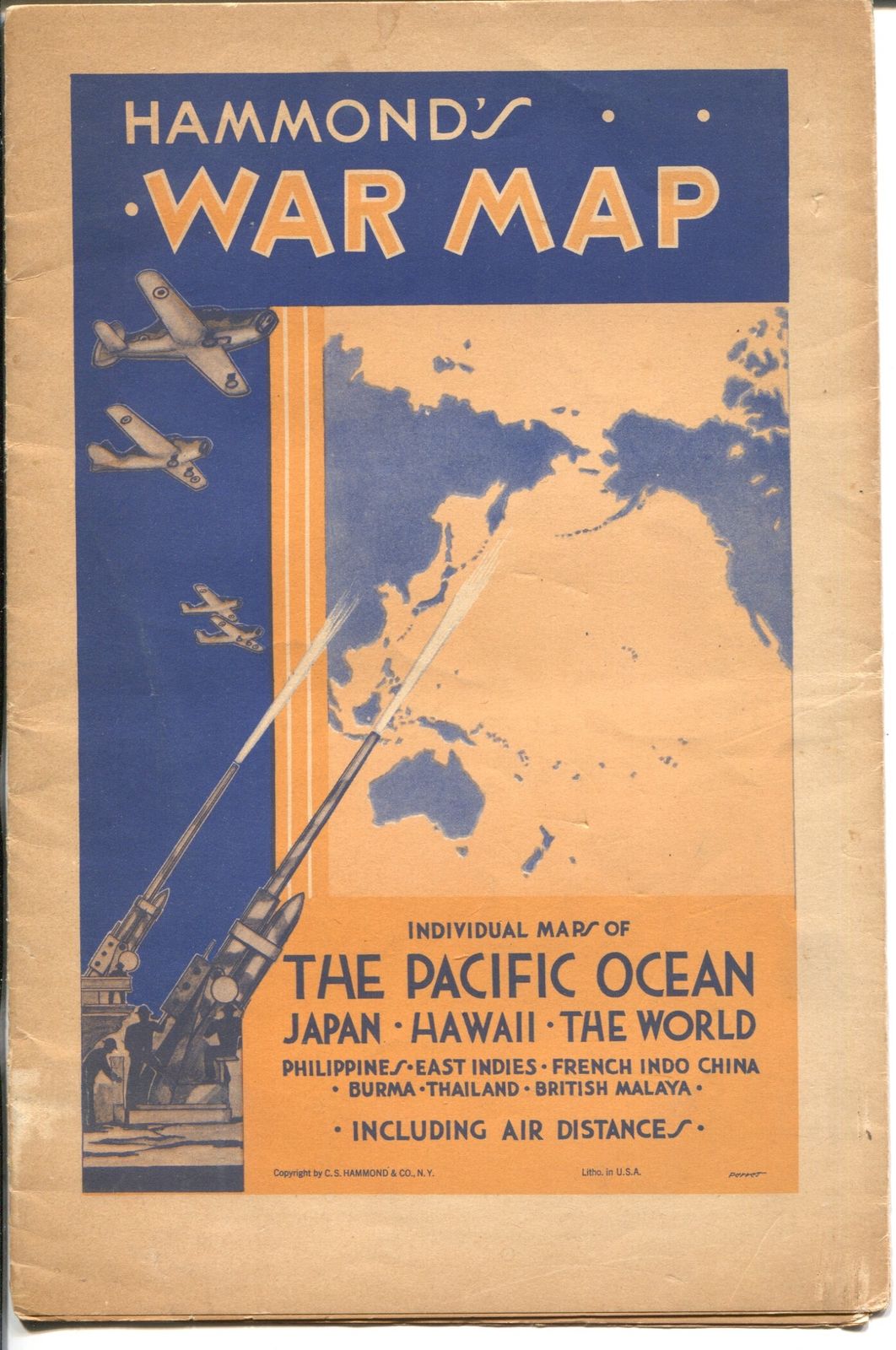
The attack on Pearl Harbor was reported as an attack on American sovereignty on December 7, 1941, but it might have been the attack on Manila that was feared by American pacifists back in 1935, that Baker cited. Japanese editorialists worried that “Huge overseas naval concentrations are equivalent to extension of international boundaries,” in January 1941, noting how American naval presence across parallels below Pearl Harbor posed a dual challenge and threat, tantamount to preliminaries to hostilities. Yet even before the conflict had begun, it seems, C.S. Hammond was drafting powerfully persuasive artistic maps of the Pacific theater, entitled “Safeguarding our American Liberty,” that revealed the extent of air power over the ocean and world that were afforded by Sikorsky Scout Bombers, Consolidated Bombers, and the Boeing Flying Fortress, mine sweepers and submarines, affording the image of a tightly patrolled Pacific.

5. The movement of both combat forces and, according to America’s Defense Secretary, stockpiling mobile blood supplies close to Ukraine’s borders, paints a rather terrifying picture. But Russia does feel rather encircled, at the same time, and consideration of “eastward expansion of NATO” is effectively off the mainstream media as we prepare for the possibility of trans-border aggression across a border that is viewed as not up for debate, but being redrawn rather quickly, but less the point than the possibility of long-range bomber flights being staged across national borders. Despite the ease of a false narrative that would cast Putin as Hitler, with military ability to reconquer the expanse of Ukraine, or interest in destroying the gas pipelines that run through the country, carrying gas from western Siberia eastward to Poland, Slovakia, Hungary, and Romania. But the prospect enlargement of NATO to an area that once held some 1,656 strategic nuclear weapons that were pointed at the United States–since destroyed–is a terrifying turning of scales.
To be sure, Russia troops and air force aviations brigades were stationed along Ukraine’s eastern border from 2014, as well, Russia reminded us, Ukraine stationing a tank brigade and art airborne and tactical aviation brigade near its eastern border and situating no less than five mechanized infantry brigades, a tank and rocket brigade, and four tactical aviation brigades near its western borders, accompanied by two army aviation regiments, and locating a tactical aviation brigade in Crimea. These were, after all, contested borders.
![Map] Ukrainian Military Bases and Russian Forces located near Ukraine's borders - The Aviationist](https://i0.wp.com/theaviationist.com/wp-content/uploads/2014/03/Map-Ukraine.jpg?resize=678%2C381&ssl=1)
Then, as now, many plausible routes of attack from Russian forces were noted across the northern borders.

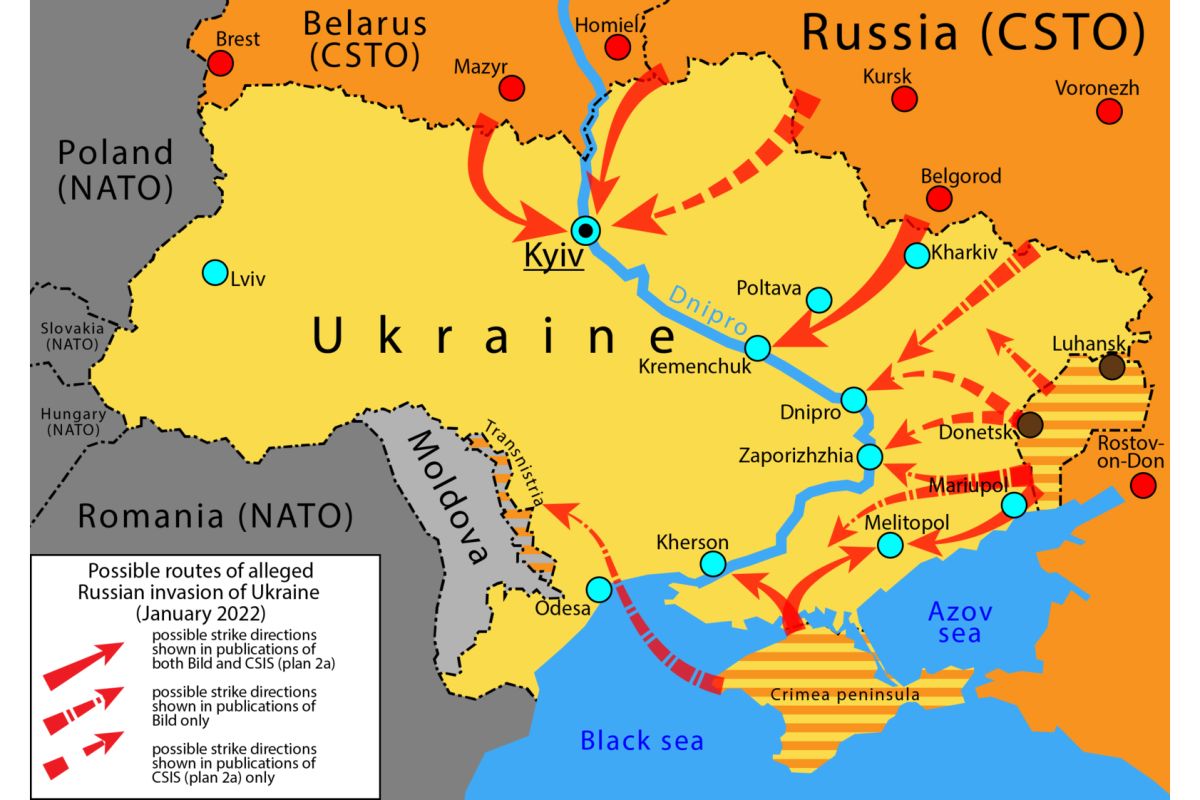
Perhaps the difference is how many Russian forced had been redeployed from other parts of the country to militarily isolate Ukraine from the west and north back by May, 2014, per Royal United Services Institute, when it sought to mobilize a massive show of force before Ukraine, and an impressive show of force before those poorer, ethnically Russian regions of eastern Ukraine–perhaps in the goal of destabilizing as much as actually invading Ukraine. This, however, was the “performative” impact of massing troops on borders in 2014. While “performative” is not usually referring to land troop transfers, the orchestration of massive movements of military force shown by such flared arrows suggest a “performative map” that simulate the actual vectors of military attack. (Putin continued to be chasing the news cycles from 2021, after waging a seven year campaign of aggression against Ukraine’s sovereignty with brinksmanship; while casting Russia as but the innocent and concerned bystander whose mobilization of military troops are not in fact invading, but concerned about a Ukrainian Civil War or Ukraine’s violence toward ethnic Russians, in Donba, feeding news headlines of an imminent Ukrainian Civil War in April 2021.
The fears of a conflict within the sovereign state bordering Russia, and once part of the USSR, led the US military’s European command to label Russia’s massing of troops on Ukraine’s border a “potential imminent crisis.” If Putin has praised the “Russian, Soviet school of chess” that nourished many grandmasters, and served the nation even during the Battle of Stalingrad, that massive Nazi invasion of Soviet lands, the soldiers massed at Ukraine’s borders from conventional forces, mercenaries, volunteers and collaborators are hardly chess moves: the show of force at the borders of Ukraine conceal the size of actual military presence. The actual military presence disguises itself in multiple shells of potential disinformation, as if wrapping the alleged desires of eastern Ukraine’s pro-Russian separatists in a waiting game of multiple military actors on Ukraine’s borders, from the Crimean peninsula to the southern military district to the north, and permanently stationing troops in Belarus, in an open challenge to compel Ukraine to leave NATO. While the news has cast this by a metaphor of chess, suitably Russian in its strategic elegance, the metaphor only cloaks “thuggery” as Grand Strategy, as we imagine eastern Ukraine was not already controlled by Russia–as if Putin’s intellectual “long game” can be separated from the absolutely amorality of the deaths of over 15,000 Ukrainians since 2014. The comparison parallels how discussion Putin’s brilliance as an architect of global power of “savvy” and “political genius” obscures the human cost of such a brutal invasion. (Trump’s obsequious complimentary admiration of the recognition of independence for eastern parts of Ukraine mimicked Russian talking points that justified the invasion and were rebroadcast immediately on Russian TV.)

The notion of an incursion that would lead to the Dnieper seems scarier how that forces are also stationed to the west, and massive naval operations in the Black Sea, a strategic force that could potentially act on allegedly internal affairs. (It often seemed that Russia’s mapping of troops on the borders disguised the scale of its involvement in the destabilization of eastern Ukraine, where it already maintained a presence.)

The amassing of troops and assault brigades from Crimea, Belarus and the Black Sea rendered the geostrategic threat more explicit, making it difficult to report on Ukraine impartially, and even to show the scale of Russian disinformation in a map. But the difficulty of describing the scenario or even the invasion seems to lie in the deep interpretive shadow that the Cold War continues to cast over the invasion, and its mapping, that dignify the obfuscations its brazen thuggery.
The feeling that many public statements, that extend to the reporting, appear differently performative–in the sense that it is about the shaping of spheres of influence and the positioning of military troops beside or at the edges of sovereign borders that threaten territorial integrity. (The modifier is bandied about with a bit too much abandon, prefaced by “purely,” as if to clarify a geopolitical conflict with great “know-it-all-ism” by puncturing public statements as of “only” performative value, rather than being powerful tools of mapping and counter-mapping.) The stakes are high in such re-mappings, as NATO is trumpeting that “enhanced” multinational presence, as a way to “counter” Russia by collective “defense and deterrence,” headquartered in Poland, even as a “proportionate deterrent force” positioned to “send a clear message that an attack on one ally would be met by troops from across the alliance.”
But the “border crisis” is a disproportionate response to the multinational presence around Russia in operations like “Enhanced Forward Presence” from 2018, largely in response to the attempt to destabilize Ukraine. The frustration of an inability to respond to the annexation of Crimea as if this belonged to Russia no doubt expanded these hopes for deterrence, but the Cold War optic in which they are framed is hardly helpful; the resilient nature of this notion of deterrence may be less robust than it appears in a post-Westphalian world where military build-ups are less evident than multinational exercises that seem designed to raise consciousness of a Russian threat, in the hopes of containing Russia’s future designs on Ukraine.
Russia for its part openly claims to prioritize a scaling back of this military presence on the table. But Russian attempts are rebuffed as deeply aggressive moves to dismantle the “security architecture” of NATO as aggressive, as NATO seeks to grow military bases in Ukraine, perhaps not a site of not only ethnic Russians–purported to be victimized in a concerted act of genocide, whose results are allegedly evident in purported existence of “mass graves” created by Ukrainian security forces. The imputation of “mass graves” is a grievous accusation of international criminality, of course, deviously made with absolutely no actual evidence.
But NATO expansion would be the death of a mantle of and image of Russian safety and security that the Russian President can claim he achieved. If the conflict is about Ukraine, nominally, the Enhanced Forward Presence initiative to “reassure countries on NATO’s Eastern flank is disturbingly cast in militaristic terms as a war of aggression on an all too familiar battlefield. If the “eastward advance” is cast as a question of deterrence, it all depends on where you are standing, and, indeed, which way is East.

When visiting the Hawai’ian island of Maui, I was struck by the presence in Paia, Willie Nelson’s home town on the island, of fields of what seemed abandoned early twentieth- or nineteenth-century stone Japanese graves off the highway. While the “mass graves” of Russians of recent creation by Ukrainian forces may be a myth, it is a useful one to fly, and reminds audiences of the presence in Ukrainian territory of graves of actual Russians, that continue to act as a sort of primordial declaration of territoriality, and protection. Yet the fear of a Russian “invasion” of the Baltic states, rooted in a tired Cold War mentality, ignores the longstanding Russian plans to remove NATO forces from Ukraine along its border, an act it presents as one of tactical defense.
The encircling of Ukraine as a whole not only isolates it from NATO, but affirms the absence of its independence in a post-Westphalian order, openly challenging its right to exist.

If the recent clustering of a terrifying density of arms and armaments around Ukraine’s borders is performative, it is hardly pure theater: with some 60,000 active-duty Russian soldiers around the borders of Ukraine, including Crimea and Kaliningrad Oblast, but excluding air, naval, and paratroopers forces and troops in Belarus, a fire is lit under the government of Ukraine and NATO forces, if the number and location of Russian units is not known, and won’t be until and unless they actually advance. The actual number may in fact be as high as of upwards of 130,000–or twice as many as we know with certainty. This isn’t an excuse for invading Ukraine by any reason, and is not a provocation to military engagement: quite the reverse. But the military land, air, and sea invasions we all have feared is a sustained attempt to erode Ukraine’s borders, denying any autonomy for the nation-state without regard for the loss of human life.
The expanding logic of “regime change” that seems to animate the three-fold invasion of Ukraine rests on a deep plan of disinformation about Ukraine’s historical borders, and non-aggression pacts in the region, but remains a manipulative re-appropriation of the sanitized cloaking war and military aggression by the with “regime change” in the recent past, reabsorbing Ukraine into Russia’s domain of sovereignty by erasing any military presence of the nation, as if its borders were indeed open.



